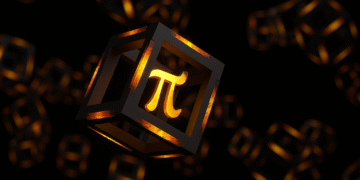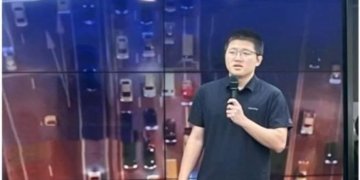The global fall detection system market is witnessing steady growth as aging populations and chronic health conditions continue to rise worldwide. With the market projected to expand from US$ 508.4 million in 2025 to US$ 697.5 million by 2032, it is anticipated to grow at a CAGR of 4.6% during the forecast period. Fall detection systems are increasingly being integrated into elderly care solutions, thanks to their potential in saving lives and enhancing independent living for vulnerable individuals.
One of the key growth drivers for this market is the increasing prevalence of age-related conditions, including Alzheimer’s disease and dementia, which elevate the risk of falls among the elderly. Among the various product types, wearable fall detection systems are leading the market due to their ease of use, mobility, and real-time alert mechanisms. North America dominates the regional landscape, attributed to its advanced healthcare infrastructure, higher adoption of smart health technologies, and a growing elderly demographic.
Elevate your business strategy with comprehensive market data. Request a sample report now: https://www.persistencemarketresearch.com/samples/8878
Key Highlights from the Report
• The global fall detection system market is projected to reach US$ 697.5 million by 2032.
• The market is expected to grow at a CAGR of 4.6% from 2025 to 2032.
• Wearable fall detection devices account for the largest share due to user-friendliness.
• The elderly population (65+) is the primary user segment driving demand.
• North America leads the market owing to technological adoption and aging demographics.
• Smartphone-integrated alert systems are gaining traction for real-time monitoring.
Market Segmentation Analysis
The fall detection system market is segmented based on product type, including wearable systems, in-home landline systems, and in-home cellular systems. Among these, wearable systems dominate the segment as they allow users to remain mobile while being continuously monitored. These devices typically include accelerometers, gyroscopes, and communication tools that ensure timely alerts in case of a fall.
From an end-user perspective, the market is segmented into home care settings, senior assisted living facilities, and hospitals. Home care remains the leading segment due to the increasing preference for independent living among the elderly. Technological advancements are enabling these systems to be more reliable, accurate, and user-friendly, further boosting adoption in personal living spaces.
Regional Insights
North America remains the dominant region in the fall detection system market, fueled by a rapidly aging population and strong government support for elderly care programs. High awareness levels and favorable reimbursement policies also play a vital role in widespread adoption.
Europe follows closely, driven by similar demographic trends and strong healthcare infrastructure. Meanwhile, Asia-Pacific is emerging as a high-growth region due to increasing awareness, a rising elderly population, and growing healthcare investments, particularly in countries like Japan, China, and South Korea.
Market Drivers
The primary driver for the fall detection system market is the increasing global elderly population. As more people live longer, often with chronic conditions, the risk of accidental falls has become a public health concern. Fall detection systems offer a proactive solution, enabling emergency response and potentially reducing hospitalization rates and long-term health complications.
Market Restraints
Despite the growing need, high costs and false alarm issues hinder widespread adoption. In-home systems may require infrastructure changes, while wearable devices can be perceived as stigmatizing or uncomfortable by some users. Additionally, technological limitations in accurately distinguishing between real falls and normal activities can affect user trust.
Market Opportunities
Advancements in AI and IoT are creating significant opportunities for innovation in fall detection systems. The integration of machine learning algorithms is improving the accuracy of fall detection, while smart home ecosystems allow for seamless emergency responses. Emerging markets also present untapped potential, with growing healthcare digitization and supportive government policies.
Reasons to Buy the Report
✔ Gain detailed insights into the market dynamics and future outlook through 2032.
✔ Understand the competitive landscape and key growth strategies adopted by major players.
✔ Analyze segmentation by product type and end-users to identify investment opportunities.
✔ Explore regional trends and market potential across North America, Europe, and Asia-Pacific.
✔ Access recent market developments, innovations, and emerging technologies.
Frequently Asked Questions (FAQs)
How Big is the Fall Detection System Market in 2025?
Who are the Key Players in the Global Fall Detection System Market?
What is the Projected Growth Rate of the Fall Detection System Market from 2025 to 2032?
What is the Market Forecast for Fall Detection Systems by 2032?
Which Region is Estimated to Dominate the Fall Detection System Industry through the Forecast Period?
Company Insights
Key Players Operating in the Market:
1. Philips Lifeline
2. ADT Inc.
3. Medical Guardian LLC
4. Connect America
5. Tunstall Healthcare Group Ltd.
6. Bay Alarm Medical
7. Legrand Care
8. Apple Inc.
9. GreatCall (a subsidiary of Best Buy)
10. MobileHelp
Recent Developments:
• Apple Inc. continues to enhance fall detection features on its Apple Watch, integrating real-time ECG and emergency alert systems.
• Medical Guardian LLC launched a new AI-driven wearable that uses predictive analytics to assess fall risk before it happens.
Conclusion
The global fall detection system market is poised for steady growth over the next decade, driven by an aging population, rising healthcare awareness, and innovations in wearable technology. With strong demand from both home care and institutional sectors, and continued advancements in AI and IoT, fall detection systems are becoming an integral part of eldercare solutions. For businesses and investors, this market presents a robust opportunity to contribute to a safer and smarter healthcare future.
Contact Us:
Persistence Market Research
G04 Golden Mile House, Clayponds Lane
Brentford, London, TW8 0GU UK
USA Phone: +1 646-878-6329
UK Phone: +44 203-837-5656
Email: sales@persistencemarketresearch.com
Web: https://www.persistencemarketresearch.com
About Persistence Market Research:
At Persistence Market Research, we specialize in creating research studies that serve as strategic tools for driving business growth. Established as a proprietary firm in 2012, we have evolved into a registered company in England and Wales in 2023 under the name Persistence Research & Consultancy Services Ltd. With a solid foundation, we have completed over 3600 custom and syndicate market research projects, and delivered more than 2700 projects for other leading market research companies’ clients.
Our approach combines traditional market research methods with modern tools to offer comprehensive research solutions. With a decade of experience, we pride ourselves on deriving actionable insights from data to help businesses stay ahead of the competition. Our client base spans multinational corporations, leading consulting firms, investment funds, and government departments. A significant portion of our sales comes from repeat clients, a testament to the value and trust we’ve built over the years.
This release was published on openPR.













